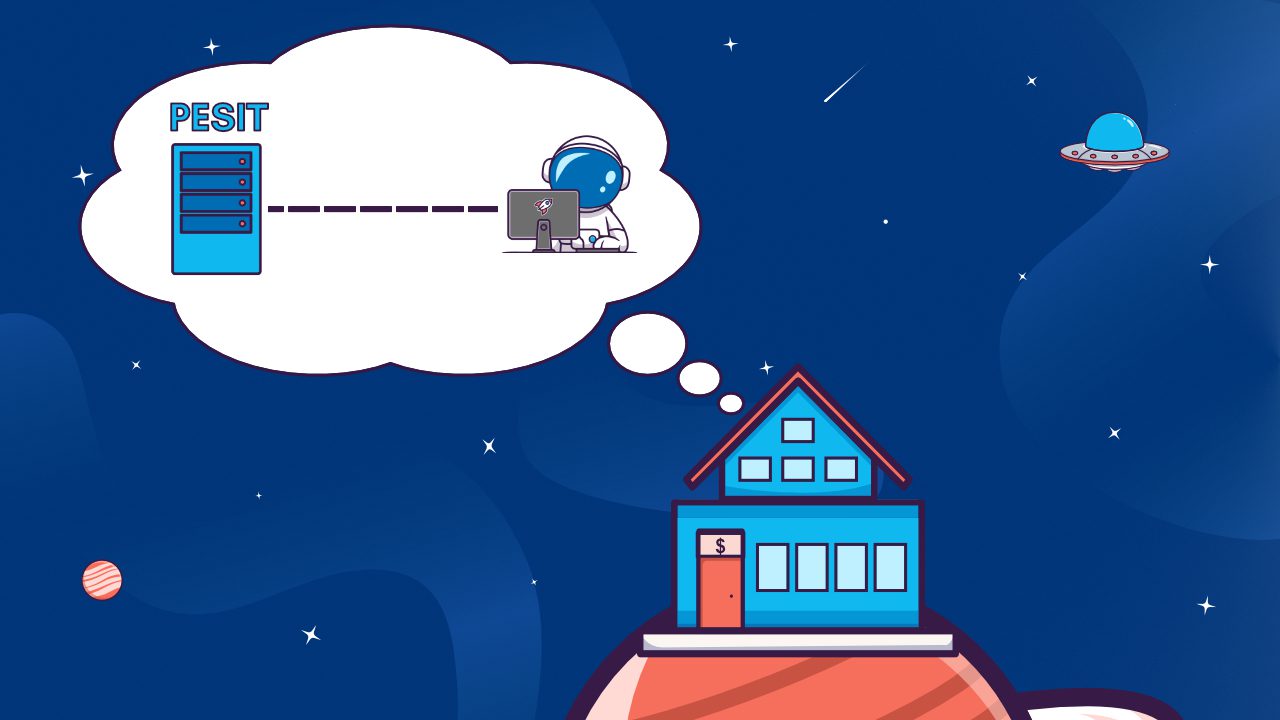As cybersecurity technology continues to advance, some might ask whether secure Managed File Transfer (MFT) is fading away as a viable option for organisations to use for their file transfer needs. If organisations do choose to utilize MFT for their secure file transfer purposes, they will certainly select the best MFT software they can. The bottom line is that MFT will not be going anywhere, and not anytime soon. Managed File Transfer is needed and the demand for it will grow.
But, before we go more into what makes MFT not only alive, but one of the best file transfer solutions out there, let’s break down a few other popular file transfer solutions:
PGP, Open PGP
PGP stands for Pretty Good Privacy. PGP and OpenPGP are security tools that are used for the encryption of data and the authentication of messages through the use of digital signatures. PGP employs cryptography, data compression, and hashing techniques. However, PGP can be complex to use which requires users to understand how they use PGP without opening holes in their organization’s security. In addition, both sender and recipient must be using PGP in order for the transfer process to complete. Open PGP is the non-proprietary form of PGP and executes tasks in a similar manner.
Want to know more about PGP? Read our Blog: USING PGP ENCRYPTION TO PROTECT YOUR DATA
FTPS
FTPS stands for FTP over SSL. FTPS is a secure file transfer protocol that allows you to connect with partners, customers, and users just like any other protocol on this list. FTPS supports security methods such as passwords as well as client and server certificates. FTPS can have strong authentication which is strengthened by the fact that most internet infrastructure has built-in support for SSL and has X.509 certificate features. One thing to know about FTPS is that it uses multiple port numbers so it can be difficult to connect through high security firewalls.
SFTP
SFTP is an acronym for Secure File Transfer Protocol. Originated in the late 90s, this protocol allows recipients of files to connect to an SSH server and authenticate it with cryptographic keys which are also known as SSH keys. Users can also use password and username combos to ensure a level of personal security. SFTP has the capability to execute file encryption, public key authentication, and is a great file transfer method for various types of flat files. Ultimately, SFTP doesn’t have a lot of downsides, yet it does have room for improvement.
Also read our article: PROTOCOLS: SFTP VS FTPS
AS2, AS3, AS4
AS2 (along with AS3 and AS4) is a popular protocol meant for transporting data securely over the internet. However, it has most popularly been used within the retail industry. AS2 is an HTTP-based protocol that transmits messages via point-to-point connection. It creates a package that enables transmissions to be delivered over the internet securely using digital certificates and encryptions. The point-to-point connection and the open ports for AS2 connection can present a possible problem as far as security but its low cost and simplicity can be of great benefit for organisations.
HTTPS
HTTPS stands for Hyper Text Transfer Protocol Secure. It is a much stronger version of HTTP that many sites are choosing to use in lieu of the latter. HTTPS doesn’t encrypt traffic which exposes organisations to a security risk. However, it provides an added encryption layer through the use of TLS. HTTPS takes the format of messaging and defines how a web browser should respond to that specific web request. All websites should be using this.
So, why does all of this matter? There are many options to choose from that can bring you a variance of security results. Let’s talk about what secure MFT services do and why they’re incredibly useful tools that will not be going away anytime soon.
What is Secure MFT?
MFT stands for Managed File Transfer. MFT software solutions are tools that secure files during transfer and streamline exchanges of data between systems, employees, and partners. MFT has the convenience of being able to work with all the aforementioned MFT alternatives. The security settings available to users of MFT services (including B2B MFT services) are robust, providing detailed audit trails and information processing for XML, EDI, CSV, and JSON database files. Managed File Transfer is extremely flexible and has a number of deployment options that easily integrate with external cloud and web apps that are often used by organisations. Whether transfers are executed on premises, in the cloud, or on MFTaaS hosted plans, secure MFT can run easily (regardless of operating system).
MFT Isn’t a Dying Technology
As the title suggests, Managed File Transfer is not waning in its ability to meet organisations’ file transfer needs. Obviously, organisations are looking for the best MFT software if they end up deciding that MFT is their file transfer type of choice.
All of this overview of other options for file transfer is the best way to understand what organisations have, what they can use, and which method might be the most useful for them. Ultimately, MFT is one of the most powerful, secure, and, most importantly, the most reliable solutions that you can use for your file transfer needs. And it’s not going anywhere. Managed File Transfer helps organisations meet their file transfer needs. One of the main draws of Managed File Transfer is its ability to automate data transfers across organisations, private networks, and external users. Overall, Managed File Transfer is an incredibly popular solution.
Benefits of Secure MFT Services
Managed File Transfer solutions offer organisations a clear way to meet regulatory compliance and offers users visibility through auditing and reporting functionality as well as an easy way to automate workflows effectively (monitoring capabilities included). Data encryption is guaranteed at rest and in motion.
Effective Cybersecurity
MFT solutions will most certainly bring a great deal of strength to cybersecurity plans within any organization. File transfers are secured both inside and outside of organisations. The aforementioned automation processes ensure secure connections and track file transfer activity. In addition, MFT implements strong encryption techniques. MFT can protect data through the use of many industry standard encryption options including Open PGP, AES, SSL, and SSH.
Clustering and High Availability
For certain secure MFT services, integrated support for clustering is provided. That means that data can be processed in high volumes for enterprises by load balancing processes across multiple systems. Clustering technology for GoAnywhere MFT provides load balancing which allows inbound connections to file servers to be distributed to evenly across systems for users. Active-active automatic failover is provided for disaster recovery. The article below covers the difference between active-active high availability strategies and active-passive high availability strategies.
Flexibility and Centralization
Managed File Transfer solutions allow for a lot of flexibility. For most MFT solutions, users can utilize MFT capabilities regardless of platform use, the method of transfer (ad-hoc, bulk-transfer), file format, geolocation, or existing workflow structure within an organization. MFT is meant to be a tool that organisations can rely on in almost any situation. All these benefits that MFT solutions provide can be controlled from a centralized dashboard which makes the management, monitoring, and execution of secure file transfers an easier task.
How organisations use B2B MFT Software
Multi-enterprise organisations will always need a robust solution to meet their file transfer needs. It’s important to move quickly, both in retrieving data and transforming data. Connecting to internal systems is a part of keeping a smooth flow for organization’s users but it’s also important to have a sleek workflow for trading partners to exchange sensitive information.
GoAnywhere MFT provides a solution for all organisations to utilize a strong B2B MFT tool for their own purposes. Large deployments and scaling solutions are made much easier with GoAnywhere. As far as B2B MFT solutions go, GoAnywhere provides one that can automate and strengthen security strategies at a level most other file transfer solutions simply cannot do.





